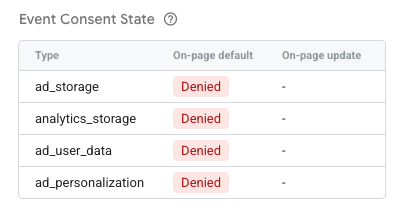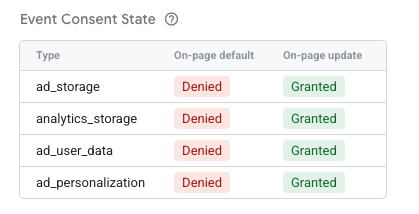Understanding Google Consent Mode & Consent Mode V2
Marketing
Development
April 16, 2025
Written by: Kurt C.

As data privacy regulations such as the GDPR and ePrivacy Directive become more stringent, website owners and marketers must navigate a complex landscape of compliance while still collecting meaningful data. Google Consent Mode is one of the tools designed to help with this balancing act.
What is Google Consent Mode?
Google Consent Mode is a framework developed by Google that allows websites to adjust how Google tags behave based on the user's consent status. Instead of simply blocking all tracking scripts before consent is granted, Consent Mode allows for more nuanced behavior. It enables the site to:
- Load Google tags (e.g., Google Analytics, Google Ads) in a privacy-compliant way.
- Respect the user's choices about tracking and data sharing.
- Still collect anonymized or aggregated data to maintain performance insights.
With Consent Mode, two main tag settings come into play:
ad_storage: Controls storage related to advertising, such as cookies used for retargeting.analytics_storage: Controls storage related to analytics, like cookies used by Google Analytics.
How Consent Works
Consent Mode operates based on user consent signals provided via a Consent Management Platform (CMP) or a custom implementation. Here's how the process generally works:
1: Default Consent State is Loaded: When a user first visits the site, Google tags are loaded with a default consent configuration. This is typically set to deny all optional storage types to avoid any non-compliant data collection before user interaction. For example:

2: User Interacts with Consent Banner: The user is presented with a consent prompt (usually via a CMP), where they can accept or reject various types of cookies and tracking.
3: Consent State is Updated: Based on the user's choice, the website updates the tag configuration using:

4: Tags Behave Accordingly: After the update, Google tags adjust their behavior. If consent is granted, tags fire normally and data is collected. If consent is denied, tags either limit data collection or rely on modeled data where possible.
This flow ensures that data collection only happens when it’s legally permissible and aligns with the user's explicit preferences.
Introduction to Consent Mode V2
In 2024, Google introduced Consent Mode V2, a more advanced version of the original Consent Mode. This update is particularly crucial for advertisers using Google Ads in the European Economic Area (EEA), as it aligns more closely with regulatory requirements and enhances the platform’s ability to serve personalized ads responsibly.
Consent Mode V2 introduces two additional consent signals:
functionality_storage: For cookies that support site features like language settings.security_storage: For cookies used for security and fraud prevention.
These new signals allow even finer control over what data is stored and when, enabling a more tailored user experience without sacrificing compliance.
Benefits of Using Google Consent Mode V2
- Regulatory Compliance: Helps ensure your site complies with GDPR and other privacy laws.
- Improved Data Accuracy: Even without consent for full tracking, Google can use modeled data to fill in gaps.
- Flexible Implementation: Works with most Consent Management Platforms (CMPs) and custom implementations.
- Enhanced User Trust: By being transparent and respectful of user choices, you build trust with your audience.
Implementation Best Practices
- Use a Certified CMP: Make sure your Consent Management Platform supports Google Consent Mode V2.
- Set Default Consent States: Use
gtag("consent", "default", {...})to define default behavior before consent is given. - Update on Interaction: After the user interacts with the consent banner, update the tag settings with
gtag("consent", "update", {...}). - Tag Early, Configure Later: Load the tags early in the head, then configure them based on consent.
Final Thoughts
Google Consent Mode V2 represents a significant step forward in balancing data collection with user privacy. It provides advertisers and website owners the tools to maintain insights and performance while respecting legal and ethical standards. If you're running ads or analyzing behavior in the EEA, upgrading to Consent Mode V2 is not just recommended—it's essential.






